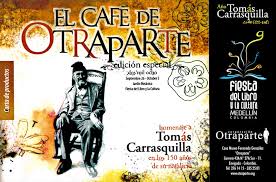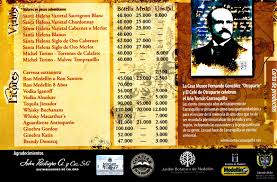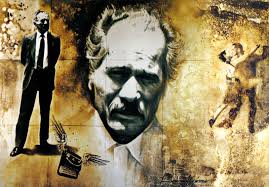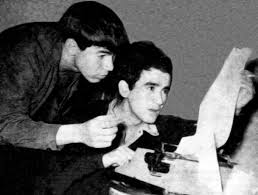Tuesday, April 20, 2010
FIX Runs into Elmo Valencia on FIX University Campus Yesterday
Bodas sin oro, Cincuenta años del Nadaísmo
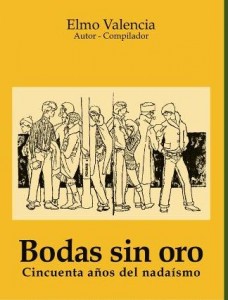 En la Plazoleta de la Nieves,
En la Plazoleta de la Nieves,
|
| 1 | 2 | 3 | 4 | 5 | 6 | 7 | 8 | 9 | 10 | Next |
en pleno centro de Bogotá, se realiza el lanzamiento del libro “Bodas sin oro, Cincuenta años del nadaísmo” del escritor colombiano Elmo Valencia, uno de los máximo exponenetes de este género cultural y literario que marcó un hito en la literatura colombiana en el siglo XX.
La presentación del libro será hoy a las 6 de la tarde y estará a cargo de los poetas y escritores Jota Mario Arbeláez, Elmo Valencia y Álvaro Medina.
El Nadaísmo es un movimiento literario colombiano que se desarrolló durante el período 1958-1964 en la ciudad de Medellín. Es un movimiento con rasgos contraculturales que tiene sus antecedentes en el dadaísmo y el surrealismo y estableció contactos culturales con la generación beat, expresó una protesta contra las instituciones tradicionales de la sociedad y la cultura, protesta que filosóficamente se enmarca en lo nihilista.
Uno de los máximos exponentes en Colombia fue Gonzalo Arango, denominado “el padre” del Nadaísmo en Colombia. En él se protestaba literariamente contra las instituciones, la iglesia y se ejercía rebeldía en general, muy similar a lo hecho por los “Poetas malditos” en Europa.
Este ejemplar fue editado por el Taller de Edición Rocca y la Fundación Casa del Nadaísmo Gonzalo Arango.

Un grupo de jóvenes guiados por el delirio poético de Gonzalo Arango en
Fue en 1958 cuando apareció el primer Manifiesto Nadaísta; desde entonces, su impulsador buscó las formas de hacerle llegar a los jóvenes de la época el folleto de 42 páginas que inauguró el surgimiento de lo que hoy conocemos como nadaísmo, el mismo que no se puede limitar simplemente a un movimiento artístico, pues es toda una vibración y desequilibrio en las formas de concebir el mundo por parte de los adolescentes.
Gonzalo Arango dejó de lado el derecho y la política para lanzarse desprotegido pero rebelde al campo literario. Las influencias de Sartre, Mallarmé, Bretón y Kafka guiaron su desilusión y frustración de haber apoyado una causa pérdida (gobierno del general Rojas Pinilla), sentimientos de los que irónicamente nació este movimiento.
El carácter nadaísta implicó para la generación de los “cocacolos” (como se les diría hoy), ir más allá de la poesía para transgredir ese espacio socio-político y cultural que obligaba a los hombres a unirse en una sola masa y orden nacional.
Fue un despertar contenido de negación, duda y cuestionamiento frente a la sociedad colombiana que a diario también despertaba entre guerras bipartidistas y unas tradiciones religiosas que parecían inviolables, pero que Gonzalo desafió.
La literatura ya no tenía límites y a la mano del existencialismo y surrealismo se unieron otros jóvenes cofundadores, como el filósofo Fernando González, Amílcar Osorio, Eduardo Escobar y más adelante Jotamario Arbeláez y Elmo Valencia, que continuarían dicho camino luego de que Gonzalo abandonara aquel estado bohemio.
 Al cumplirse 50 años del surgimiento del nadaísmo, hace dos días se realizó el lanzamiento del libro Bodas sin oro, que recoge textos de varios nadaístas. Aula & Asfalto entrevistó al poeta nadaísta Jotamario Arbeláez, de quien se incluyen textos en esta obra.
Al cumplirse 50 años del surgimiento del nadaísmo, hace dos días se realizó el lanzamiento del libro Bodas sin oro, que recoge textos de varios nadaístas. Aula & Asfalto entrevistó al poeta nadaísta Jotamario Arbeláez, de quien se incluyen textos en esta obra.
¿Cómo influyó el nadaísmo en los jóvenes de ahora?
Les dinamitó los bloqueos y les abrió las compuertas. Ya los jóvenes
no tienen que soportar el tener como parámetro a Jorge Isaacs, ni
estar sujetos a
tienen que ir a misa el domingo. Ni afrontan el ser conducidos a la
cárcel o al matrimonio por comerse a la novia, ni por fumarse un
bareto. Prometimos "no dejar una fe intacta ni un ídolo en su sitio",
y cumplimos.
Si el nadaísmo es una propuesta de cambio en todo, ¿no es necesario impulsarlo una y otra vez, como una forma de protesta y desacuerdo con todo esto que nos han impuesto? Si es así, ¿cuáles podrían ser las fórmulas para impulsarlo?
El nadaísmo fue desde siempre un movimiento rebelde de jóvenes en
busca del poder joven. Y después de 50 años sus integrantes estamos
por tirar nuestra juventud por la borda. Ya vivimos toda una vida
pedaleando nuestros parámetros. Es hora de que la juventud de ahora
recoja nuestras banderas sin trapo ni palo y se exprese de acuerdo
con su rebeldía de la época, impulsada por los bloqueos que hoy
existan. Tienen nuestro consentimiento. Les regalamos nuestro
nadaísmo, mientras conserven la irreverencia y el humor negro.
¿Podría surgir y sobrevivir además, un movimiento como el que usted junto a otros personajes fundaron hace 50 años?
Es difícil, por cuanto el mundo ya no está para liderazgos de seres providenciales. Creo que el nadaísmo fue el último movimiento de masas de jóvenes. Por eso insisto en que lo que deben hacer los jóvenes es hacerle mantenimiento a nuestro "inventico" y seguirlo utilizando en defensa de la dignidad humana.
¿Cuál es el elemento culpable, para que movimientos como el nadaísmo se hayan apagado en una sociedad como la nuestra que más que nunca necesita desahogarse y ser irreverente?
El nadaísmo no se ha apagado porque no es una vela. La prueba es que
estamos lanzando el libro de nuestros 50 años, Bodas sin oro, y
estamos rodeados de jóvenes que nos besan. Lo que pasa es que
parecería que el nadaísmo se acabó porque es ahora el mundo el que
practica el nadaísmo que nosotros vamos dejando.
¿Podemos hablar hoy de la existencia de movimientos de vanguardia?
En el arte siempre habrá movimientos de vanguardia. Que no pueden durar medio siglo porque tienden a volverse clásicos. Creo que es lo que nos está pasando. No es culpa nuestra.
¿En qué podemos creer hoy?
No creáis en el Credo. Creed en todo.
¿Más que recopilar los textos de los "últimos nadaístas" en Bodas sin Oro, hay algo en especial que se pretenda con esta publicación?
Pretende mostrar que a partir de la mitad del siglo pasado la juventud
colombiana decidió no seguir tragando entero y ser dueña de su
destino. Pero un destino a la medida de un soñar sin medida.
  |
| Angelita y Gonzalo Arango. |
 |
| Jotamario, Diego León Giraldo y
Gonzalo Arango |
¿Quiénes son los últimos nadaístas presentes en Bodas sin oro?
Los últimos nadaístas somos todos, principalmente los que ya desaparecieron, como Gonzalo Arango, Amílcar Osorio, Darío Lemos, Humberto Navarro, Alberto Escobar, Guillermo Trujillo, Alfredo Sánchez, Diego León Giraldo, Samuel Ceballos, Kat. Los vivos, es decir los que seguimos comiendo del muerto, somos Elmo Valencia, Jaime Jaramillo Escobar, Eduardo Escobar, Jaime Espinel, Armando Romero, Álvaro Medina, Patricia Ariza, Pablus Gallinazus. Y los nuevos son los que vienen, es decir, los que están leyendo este párrafo.




ELMO VALENCIA: Nació en Cali, Colombia. Fue el fundador del movimiento nadaísta colombiano, junto a Gonzalo Arango, Jota Mario Arbeláez, Eduardo Escobar y otros poetas y escritores. Poeta, novelista y ensayista, tuvo contacto tempranamente con los escritores Beats de la generación del 50 en Estados Unidos. Se graduó en Ingeniería electrónica. Cuentos del universo humano es uno de sus libros publicados. Según su opinión, si no hubieran matado a Jorge Eliécer Gaitán, no hubiera surgido el Nadaísmo.
El Nadaísmo y El Techo de la Ballena / Juan Calzadilla
Nadaísmo and El Techo de la Ballena
In what ways do El Techo de la Ballena and Nadaísmo identify or distance themselves from each other, in terms of their proposals, influences and their actions in common? On principle, I wouldn’t ask myself this question if I wasn’t sure that the similarities that joined us together are greater than the differences that might emerge from studying the two very different contexts in which both groups moved. A social context on the Colombian side and a political context on the Venezuelan side. This peak I refer to should be understood keeping in mind that the Nadaísta movement remains active, even if hidden, and has now moved into a retroactive phase that surprises us with the boom of its editorial activities, not just in the present production of its living representatives, but also the launching of new work, always under the banner of Nadaísmo, while far from resigning itself to succumbing, it continues to generate polemical information, year after year, as a corollary to a long collective history of processes, that its most radical apologists, Jotamario, Eduardo Escobar and Armando Romero, are committed to defending until the end. This is how Nadaísmo has become not only the literary group with the longest history in Latin America, but also the most prolific in actions and in work collected in books. A History in Fragments The history of El Techo de la Ballena is shorter and more elliptical and can be contained in a work that gathers seven or eight months of battle, viscous humor, acts within jurisdictions and non-conformist challenges, as can be seen in an austere and stingy work of criticism that, in the absence of a more exhaustive and complete publication, continues to be the anthology by Angel Rama (Fundarte, 1987), the most consulted text and practically the only example of value-driven matter to be written about the group. And yet as an anthology, it is an enormously minor publication. The editorial luck of El Techo de la Ballena is not a limitation that can be attributed to the group not being very productive. On the contrary , we all know there’s plenty of material in magazines and newspapers, or still unpublished or that hasn’t been gathered into a book, particularly those of graphic or testimonial nature. And I provide as an example the profuse, intransigent, and very singular work of Dámaso Ogaz, today scattered and at risk of being lost in experimental magazines edited by mimeograph in an artisan manner by Ogaz himself, during his long via cruces in the Venezuelan provinces. Or the extensive autobiographical poetry of Caupolicán Ovalles, delicately published in the form of bricks that, in order to oppose other more traditional publications, Edmundo Aray called tubular editions, throwing them into political events and exhibits. The good critical fortune of Nadaísmo is explained in part by this movement’s continuity, since its foundation in 1959 until today, throughout what has perhaps been the most dynamic and controversial chapter of modern Colombian literature. In this sense, the fact that its central chroniclers are its most polemical members, has helped Nadaísmo attain greater unity and guarantee, despite the ravages of time, desertions and death, coherence with its first propositions, which is to say, an attack against bourgeois morality, the use of daring humor, subversion against the clerical institution and preaching anarchy as a subversive form. The same does not happen with El Techo de la Ballena, whose trajectory was more brief, so it makes sense their dedication was more circumstantial, or if you’d like, more factual with events, although no less corrosive and transverse than the position Nadaísmo took in relation to Colombian reality. And if the former’s brevity does not serve in detriment of its importance, it is no less true what Angel Rama said when describing El Techo, in the prologue to the cited anthology, that “it was the product of a historical circumstance that moves while this circumstance transmutes, loses its characteristics and gives in to the most traditional forms of creation: the book, individual tasks, art.” According to Rama, “it was the confirmation of the failure of a defeat after which began the current every man for himself phase.” Although we can highlight the debatable content of this last affirmation, the truth is that El Techo was stopped by the loss of impulse to continue existing beyond the disappearance of the adverse conditions that were stimulating it. It is evident that in the absence of leadership like that exercised by Gonzalo Arango in Nadaísmo, the cohesion of El Techo de la Ballena depended much more on the coherence of its transitory proposals and the challenges posed by them, than on weak generational connections, whose absence for the same reason contributed to members of the group having a more heterogeneous and open conception of the literary act and a less interdisciplinary one than what defined Nadaísmo, a matter that can be noted by comparing the Ballenero conception of the poem with the colloquial, narrative, unabashedly realist or descriptive tones that serve as common factors in the poetics of Gonzalo Arango, Jaime Jaramillo Escobar, Jotamario Arbeláez, Eduardo Escobar, Eduardo Zalamea and Elmo Valencia, and without taking away anything from the personal tone each one of these poets fiercely maintained. The diversity of styles and thematic registers in the poets of El Techo, aside from corresponding to formal or generational differences, indisputably carries with it an ingredient of anarchy or indolence that contributed to the group’s dispersion. This common element of rejecting traditional lyricism on the part of the Nadaístas and the Balleneros remits, in both movements, to a recourse to Surrealism, or if you will the tradition of French poetry, just as Jotamario himself recognizes when he writes that “we practically dug up Lautréamont, the surrealists, Rimbaud, in our effort to change life” (this “to change life” is taken from Rimbaud and Jotamario thus underlines it). Although the surrealist precedent in El Techo de la Ballena can also be seen at a certain point as being defined by subscription or militancy, such as with the anti-clerical manifesto “Para aplastar el infinito,” and as could be observed in the use of automatic writing to compose their principal texts, as for example with Los venenos fieles or Dictado por la jauría, one has to say however that fantastic invention or the appeal to the absurd, to the unusual metaphor and to black humor as resources of speech placed in the service of writing in its goal to hyper-sensitize events, all this not the result, as one might think, of a mere adoption or copying of surrealist language, but rather it was a consequence of the development of imagining forms (or metadialectics, as linguists would say) inherent to radical expressive behavior, in tune with our realities, and surging as a reaction to the medium in which both groups had to move for impact and, as Aray used to say, with no gloves on. If we can speak of a model borrowed, as was the case with Surrealism, nothing stops us from accepting that what passed into our language from this model was a transformation of poetic speech. We would have to add to the search for a foundation in other linguistic traditions, that Jotamario opposes to Spanish lyricism and the local traditions of it, the numerous affinities that filter quickly through the visceral body of Beat poetry and especially that of Ginsberg, Kerouac, Corso and Ferlinghetti, influences or maybe affinities who might have more consistency among the Nadaístas than in the language of the Balleneros, with the exception of Caupolicán Ovalles who, it turns out, face to face with what we’re recounting and if we compare his poetics with the rest of his companions from El Techo, was the one closest to the unabashedly colloquial spirit of the Nadaístas, as can be seen by his poem “¿Duerme usted señor presidente?” (1961). Amid those attuned components, inspired by poetics from other languages and articulated toward our own, we find the recuperation of orality that proceeds from a few poets of the Colombian tradition, such as León de Greiff and Barba Jacob, in the same way they incorporate to the poetic language the profanities of common use in ghetto slang, as primarily glimpsed in the work of Mario Rivero, who somehow became for the Nadaístas, or for a few Nadaístas, the equivalent of what the work of Ramos Sucre or Juan Antonio Vasco indisputably meant for the Balleneros. Literary Genres Another type of investigation around the relationships between both groups could lead us to a consideration of the genres in which they wrote, which implies saying that the innovative aspect of their proposals, in terms of the forms themselves, is sustained in a radical opposition to social realism that continued to be written or painted in both countries around the time those groups emerged. And naturally this opposition, which saw clearly the importance of watching out for form in writing, didn’t result in El Techo de la Ballena or in Nadaísmo to be a perfectionist preoccupation and without even asking about the problem of style, but instead actually mocked everything that could seem too literary, cold, rhetorical or formally sacrificed to freedom for the sake of doing anything they wanted to with literary genres. Regardless of whether Nadaísmo was a predominantly lyrical movement, or in whose origin we find poetry, we musn’t forget the narrative attempts their representatives more or less take on, as in the case of Jotamario, who fortunately for those of us who follow his poetry, confesses that he’s a frustrated novelist, the author of an epic poetry organized in blocks sewn with tailor’s thread. Gonzalo Arango, without abandoning poetry, presents himself as a precursor to crime fiction in Colombia, while Armando Romero and Elmo Valencia continue to ambidextreously produce poetry and stories. Jaime Jaramillo Escobar, the most metaphysical and marble-like of the nadaístas, is like a herald of the Colombian apocalypse erected in a statue barnished by the Roman moon of one of De Chirico’s plazas. Jaime has been in charge of petrifying the gestures of a real parody that’s not very well-constructed until he’s able to displace history for a puppet theater. Armando Romero, the youngest of the group, crossed Nadaísmo’s borders to wander like a hippie, backpack on his shoulder, through many countries, before settling in our Mérida, where he became the protagonist of the most corrosive farce that any writer has told in order to unmask, in a hilarious novel like La piel por la piel, the terrors and miseries of the Venezuelan university. Common Origins Nadaísmo and El Techo de la Ballena were groups that challenged, surging almost simultaneously in Colombia and Venezuela amid and as an expression of violent ruptures and historical cuts that shook the sociopolitical structures and the cultures of both nations. Starting in the sixties – as Jotamario Arbeláez wrote – all of America was a great poetic commotion. Cuba was a focal point of suns over the hope of the new man. All the poetries founded movements and magazines that carried the airs of renovating language and the overwhelming sensibility of the moment that was this century. That’s how it went in Colombia and in Venezuela, this country we love as if part of it were ours, that miracle of challenging expressions, with all the violence of a perfidious humor and a butchering confrontation, that in Venezuela was called El Techo de la Ballena and in Colombia Nadaísmo. It’s true that El Techo could claim for itself a larger portion of compromise facing the political violence that operated from power, an even a larger dose of utopian delirium and of stubborn experimentalism to the utmost, but in poetry we never reached in Venezuela, neither then nor later, to a derangement of the senses of such virulence as the one provided by the Nadaísta tribe of an unrestricted and unrestrained cult to insensitivity and situations at the limits. Plastic Arts or the Informalist Insubordination Another important analogy is the passion for plastic arts and the energy with which both movements moved to integrate them to the program of intellectual subversion. If this characteristic is more blatant in El Techo de la Ballena, for whom painting played a decisive role in the innovative proposals. But it would be better to explain. We founded our group at a moment when the avant garde in the plastic arts were reaching in Venezuela a tense and unbearably hypocritical atmosphere. The fact that several of the group’s activists were painters and art critics precipitated even more, by means of manifestos and exhibits, the alliance between literature and art in order to accomplish a result that would have never reached such a burning and radical moment if each discipline had marched separately, or if they hadn’t complemented each other in the way they did; the integration of both manifestations, literature and art, can be appreciated from the start at the group’s launch in March of 1961, through the exhibit “Para restituir el magma,” whose purpose, more than showing the work, even if they were of an experimental nature, was to provoke a scandal. El Techo de la Ballena and Nadaísmo were polemical movements and it was precisely polemic that mostly nurtured the disaffection with the system that moved them to achieve higher objectives which when translated to literature and art produced innovative and subversive work. That its main enemies could have been found among the people who proclaimed themselves with the title of true revolutionaries, is nothing more than a formality which both groups knew how to take advantage of so as to point out with foresight that with Nadaísmo and El Techo de la Ballena an end was being imposed on the history of literary groups, but also on the reign of utopias.







